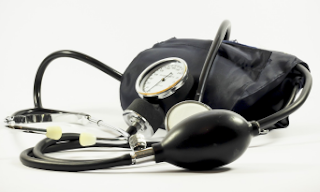Blood pressure, the force exerted by your blood against your artery walls, is a crucial vital sign. Monitoring it regularly can help prevent and manage cardiovascular diseases, which remain leading global health concerns. Learning how to measure blood pressure using a sphygmomanometer empowers individuals to take charge of their health.
Why Mastering this Skill Matters
- Early Detection: Regular monitoring allows for early detection of high blood pressure, often asymptomatic, enabling timely intervention and potentially preventing serious health complications like heart attacks and strokes.
- Improved Management: For individuals diagnosed with hypertension, self-monitoring helps track their progress and adjust medication or lifestyle modifications as needed, in consultation with their healthcare provider.
- Empowerment and Peace of Mind: The ability to measure blood pressure at home provides individuals with a sense of control and reduces anxiety associated with unknown fluctuations.
The Sphygmomanometer: Demystifying the Tool
A sphygmomanometer, often called a blood pressure monitor, comprises three main components:
- Cuff: Wrapped around your upper arm, it inflates with air to occlude blood flow momentarily.
- Manometer: This dial or digital display measures the pressure exerted by the cuff on your artery.
- Stethoscope: Placed over your brachial artery (inner elbow), it helps detect the Korotkoff sounds, crucial for accurate readings.
Learning the Technique
- Preparation: Ensure a calm and quiet environment. Sit comfortably with your arm supported at heart level.
- Cuff Placement: Wrap the cuff snugly around your bare upper arm, about 1 inch above the bend of your elbow.
- Inflation: Inflate the cuff rapidly until you can no longer feel your pulse.
- Deflation: Slowly release air while listening closely through the stethoscope.
- Recording: Note the first (systolic) and last (diastolic) clear Korotkoff sounds, representing your blood pressure readings.
The Legacy of the Sphygmomanometer
The invention of the sphygmomanometer by Italian physician Scipione Riva-Rocci in 1896 revolutionized blood pressure measurement. Its simplicity and reliability have made it a cornerstone of medical practice. Furthermore, the understanding of the underlying principles facilitated the development of automated digital blood pressure monitors, accessible to a wider population.
Today, digital devices offer convenience and accessibility, but proficiency in using a sphygmomanometer remains valuable. It allows for independent monitoring, verification of digital readings, and deeper understanding of blood pressure dynamics.
Mastering the skill of measuring blood pressure with a sphygmomanometer is not only empowering but can also contribute to a healthier life. It serves as a reminder that even basic tools, when understood and utilized effectively, can have a profound impact on our well-being.
What are the Korotkoff sounds?
The Korotkoff sounds are tapping or thumping sounds heard through the stethoscope while inflating and deflating the sphygmomanometer cuff. These sounds correspond to the opening and closing of the brachial artery as blood pressure changes. The first clear sound is the systolic pressure, and the last clear sound is the diastolic pressure.
What are some common errors to avoid when measuring blood pressure?
Some common errors to avoid include:
- Incorrect cuff size: Using a cuff that is too small or large can lead to inaccurate readings.
- Not supporting your arm: Your arm should be supported at heart level throughout the measurement.
- Talking or moving during the measurement: This can affect your blood pressure reading.
- Measuring immediately after smoking, eating, or exercising: Wait at least 30 minutes after these activities to measure your blood pressure.
- Taking multiple readings in a row: Wait 2-3 minutes between readings to allow your blood pressure to return to baseline.
What are some additional tips for getting accurate blood pressure readings?
Here are some additional tips:
- Use a clean and dry stethoscope.
- Place the earpieces of the stethoscope in your ears and point the diaphragm towards your brachial artery.
- Deflate the cuff slowly and evenly.
- Record your blood pressure readings in a log and bring it to your doctor at your next appointment.
How often should I measure my blood pressure?
The frequency of blood pressure measurement depends on your individual risk factors and medical history. Your doctor will advise you on how often you should measure your blood pressure.
What is the normal range for blood pressure?
The normal range for blood pressure is less than 120/80 mmHg. However, normal blood pressure can vary slightly depending on your age and other factors.
What should I do if my blood pressure reading is high?
If your blood pressure reading is high, it is important to see your doctor. They will help you determine the cause of your high blood pressure and recommend treatment options.
By understanding the basics of measuring blood pressure with a sphygmomanometer and following these tips, you can take control of your health and monitor your blood pressure effectively.




Post a Comment
Post a Comment